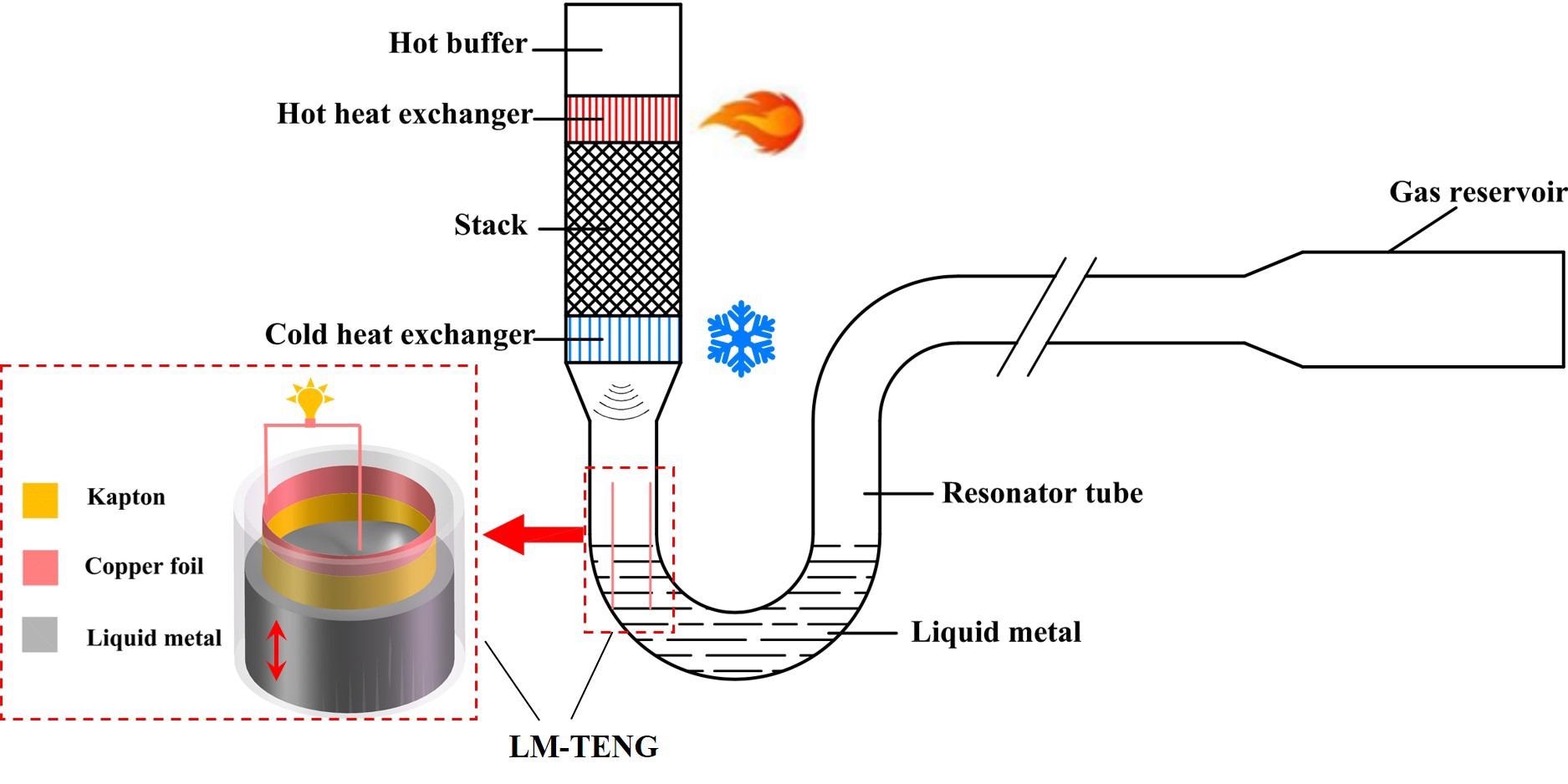Mar 25 2021
Researchers from China have come up with a highly reliable thermal power generator that integrates triboelectric effect and thermoacoustic effect.
 Schematic of the TA-LM-TENG. Image Credit: Luo et al.
Schematic of the TA-LM-TENG. Image Credit: Luo et al.
Published online in Applied Physics Letters and chosen as a featured article, the new study was directed by Prof. Ercang Luo and Prof. Guoyao Yu from the Technical Institute of Physics and Chemistry (TIPC) of the Chinese Academy of Sciences.
In the last few decades, there has been an increase in energy and environmental crises.
The development of thermal energy collectors to harness plenty of low-quality thermal energy (like geothermal heat, biomass combustion, and waste heat) and its conversion into electric or mechanical energy is a potential energy approach to mitigate crises.
But at present, a majority of the thermal power generation technologies (like Stirling engine, Rankine cycle, and internal combustion engine) use solid moving parts, which affect the reliability of these technologies and make regular maintenance most required.
In this study, researchers designed an innovative thermal power generator that could convert thermal energy into electric energy. The fact that this novel generator does not have any solid moving part is one of its appealing aspects.
The generator could be able to realize a long life span and highly reliable. Moreover, this generator assures a theoretically high heat-to-electric conversion efficiency.
This innovative thermal power generator known as thermoacoustically driven liquid-metal-based triboelectric nanogenerator (TA-LM-TENG) includes two parts—liquid-metal-based triboelectric nanogenerator (LM-TENG) and thermoacoustic engine (TAHE).
First, the TAHE converts thermal energy into acoustic energy through oscillatory thermal expansion and contraction of the working gas. Then, the LM-TENG converts the acoustic energy into electrical energy through the coupling effect of contact electrification and electrostatic induction.
As illustrated in the figure above, when the hot heat exchanger of the TAHE is heated, the working gas in the engine starts to oscillate spontaneously
The oscillatory motion of the working gas thrusts the liquid metal column that resonantly flows upward and downward in the U-shaped tube.
The liquid metal is periodically immersed and separated with Kapton material. Thus, the generator produces an alternate electric potential difference at the electrodes. Then, electrical power is derived from the TA-LM-TENG.
As part of initial experiments, the researchers achieved the maximum possible open-circuit voltage amplitude of 15 V on a conceptual prototype.
This study was financially supported by the National Key Research and Development Program of China and the National Natural Science Foundation of China.
Journal Reference:
Zhu, S., et al. (2021) Thermoacoustically driven liquid-metal-based triboelectric nanogenerator: A thermal power generator without solid moving parts featured. Applied Physics Letters. doi.org/10.1063/5.0041415.